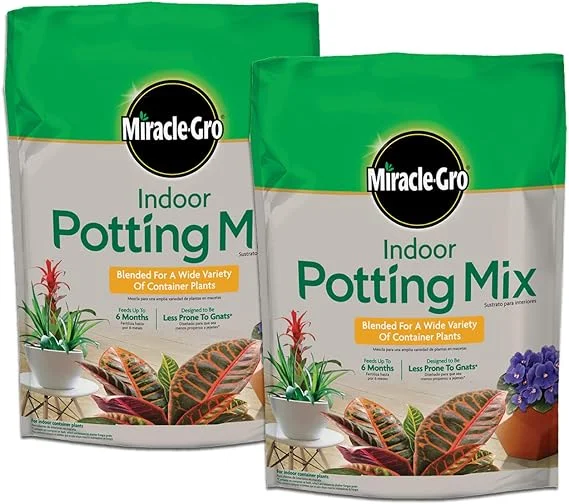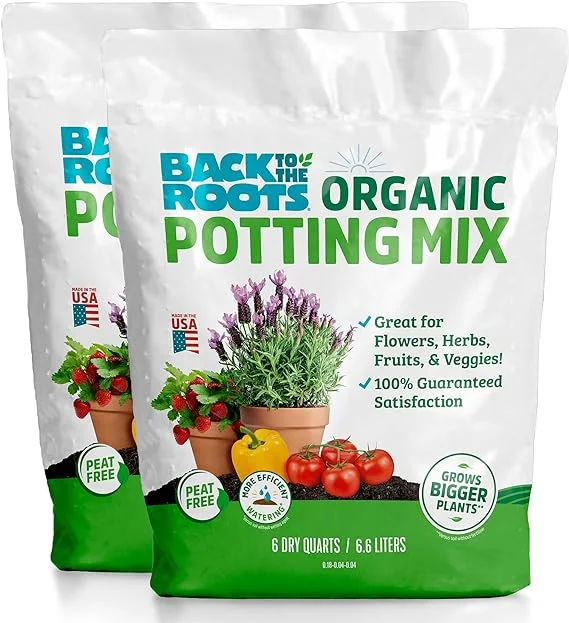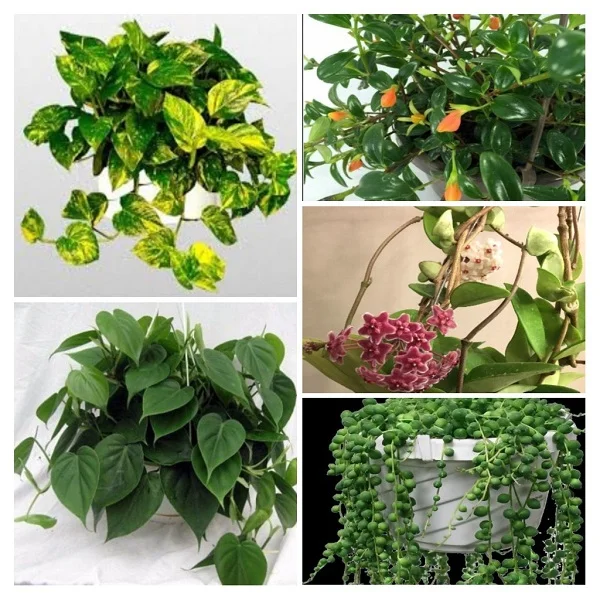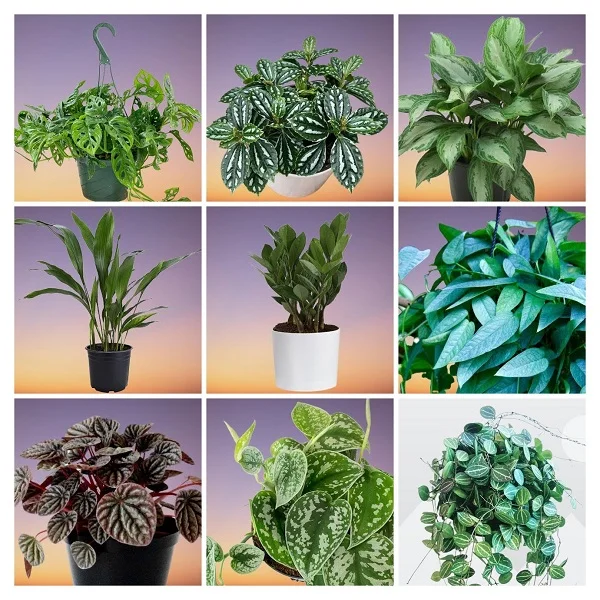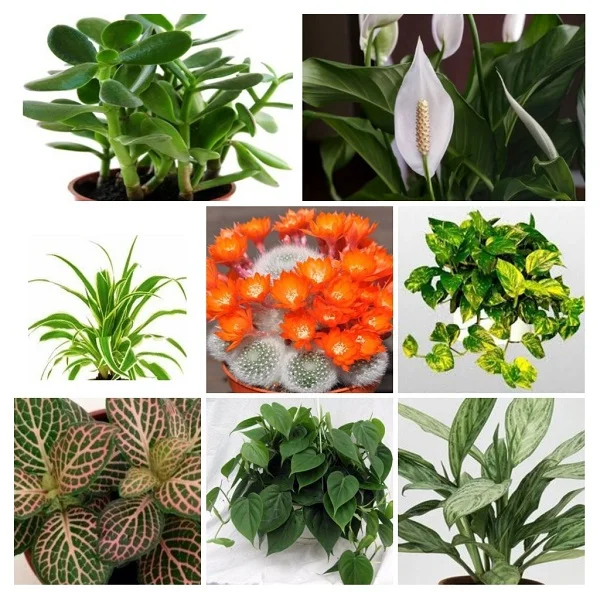Tradescantia chrysophylla 'Baby Bunny Bellies' Indoor Care, Problems and Remedies
Some links in this post may be affiliate links
Tradescantia chrysophylla 'Baby Bunny Bellies' grows best in bright indirect light, average warmth, moderate humidity and moderately moist, rich, well-drained soil coupled with monthly feeding in the growing season.
This plant is just adorable—it’s also low-maintenance, fast-growing, and great for small spaces. Here is an overview of this versatile plant.
Baby Bunny Bellies Plant also called Baby Bunny Bellies Tradescantia, Tradescantia Baby Bunny Bellies or Speedy Jenny Baby Bellies is among the popular, trailing Tradescantia varieties and bears fuzzy foliage which feels like the under belly of a baby bunny. It is one of the best plants for the home.
The velvety green leaves in Baby Bunny Bellies Tradescantia have beautiful, soft, purply undersides. The plant grows to a height of 6-8 inches and can trail upto 2 feet wide and is perfect for a hanging basket.
Tradescantia Baby Bunny Bellies like its cousin Tradescantia fluminensis (Small-leaf Spiderwort) is easy to grow indoors when given right growing conditions.
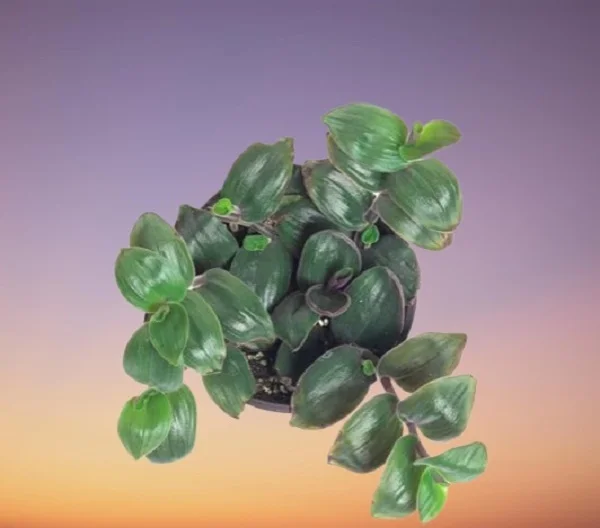
Botanical name: Tradescantia chrysophylla
Family: Commelinaceae
Common names: Baby Bunny Bellies Tradescantia, Tradescantia Baby Bunny Bellies, Baby Bunny Belly Plant, Speedy Jenny Baby Bellies, Baby Bunny Bellies Plant
Toxicity
Baby Bunny Bellies Plant is mildly toxic to humans and pets. If ingested, the plant sap can cause burning in the mouth, tongue and throat. The sap may also cause skin irritation in sensitive skin. Always wear gloves when handling your Speedy Jenny Baby Bellies.
Where to Buy
Would you like to add Baby Bunny Belly Tradescantia to your collection? They are available online on Etsy (Link to Etsy).
Baby Bunny Bellies Plant Care Indoors
Whether you're a beginner plant parent or an experienced collector, this guide will show you how to keep your Baby Bunny Bellies happy and thriving!
Baby Bunny Belly Plant (Tradescantia chrysophylla) flourishes in bright indirect light (dappled light), average warmth of 18-240C, moderate humidity of 50-55% and moderately moist, fertile, well-drained, all purpose soil coupled with monthly feeding during the growing season.
Speedy Jenny Baby Bellies Plant requires pruning to keep it neat, to control growth and to rejuvenate growth. Repotting is necessary when it becomes extremely pot-bound. Keep reading for more on these growing conditions and how to achieve them.
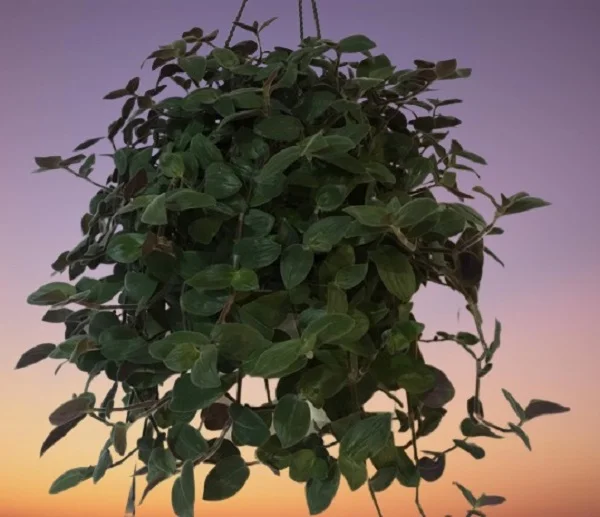
Watering
Watering your Baby Bunny Bellies Tradescantia is not complicated. During the growing season, liberally wet the soil until the water drips through the drainage hole. Allow the soil to dry slightly between waterings.
Maintain the soil moderately moist but not soggy (too wet) as it can result in yellow leaves, mushy stems and musty smelling soil due to rotting stems and can lead to death of the plant.
Decrease watering in the cold weather to keep the soil barely moist as growth is minimal at this time. However, do not allow the soil to dry out completely; dry soil can lead to dry curling leaves, crispy brown edges and stunted growth.
Ensure that the pot has a drainage hole to prevent the soil from getting soggy soil as it can lead to root-rot and death of the plant. Use room-temperature water to avoid shocking the plant’s roots.
Temperature and Humidity
Average warmth of 18-240C with a minimum 130C is ideal for your Baby Bunny Bellies Tradescantia. Keep it away from drafts as they can cause leaf drop.
Baby Bunny Bellies Plant has no need for high humidity. Average room humidity of 50-55% is ideal for this Plant. However, set the pot on a wet pebble tray or use a cool mist humidifier to raise humidity where the temperatures are too high. Check out these techniques on how to raise humidity for houseplants.
Clean the leaves regularly by damp-wiping with a soft cloth to keep them clean as well as discourage pest and disease infestations. Ascertain that there is proper circulation to minimize fungal diseases.
Light Requirements
Baby Bunny Bellies Plant grows best in bright indirect light. Keep it away from direct sunshine as it can cause ugly brown scorching marks on the leaves. If your plant becomes leggy or stretched, it's likely not getting enough light.
Where the lighting is not adequate, consider investing in a grow light to ensure that the plant receives enough light for a lush growth. Take a look at these full spectrum grow lights on Amazon.
Regularly rotate the pot to ensure that the plant receives light on all sides for uniform growth and to prevent leggy growth.
Fertilizer
Feed your Baby Bunny Belly Plant with a balanced, liquid fertilizer every 4 weeks during the growing period. Withhold feeding in the cold season as the growth is minimal and feeding at this time may lead to fertilizer burn; burnt leaf tips. To encourage bushy growth, you may choose a fertilizer higher in nitrogen.
Potting Medium
The best soil for Tradescantia chrysophylla soil should be a light, well-draining potting mix that is rich in organic matter. Avoid heavy, compacted soil, as it retains too much moisture. Most all purpose potting mixes are ideal for this plant.
Repotting
Repot your Tradescantia Baby Bunny Bellies during the growing season only when the plant has become extremely pot-bound. Use a pot one size larger than the current one.
Ensure that the pot has a drainage hole to prevent the soil from getting soggy as it can lead to root-rot. Speedy Jenny Baby Bellies is spectacular in a hanging basket where the the stems can cascade downwards beautifully. Take a look at these hanging planters with macrame hangers on Amazon.
Pruning
Pruning Baby Bunny Bellies Tradescantia is easy as it involves regular removal of dead foliage to maintain the plant neat and tidy as well as discourage pests and diseases.
To control the growth of the plant and encourage bushyness, pinch the growing tips. When the plant becomes leggy, cutback leggy stems with a sharp, clean pair of pruning scissors at the beginning of the growing season to rejuvenate growth and promote a compact growth. You may use the stems to propagate new plants.
Propagation
Tradescantia chrysophylla propagation is easily done during the growing period by plant divison or from stem-cuttings which can be rooted either in water or in soil.
Read more on these 3 Methods of Tradescantia chrysophylla 'Baby Bunny Bellies' Plant Propagation.
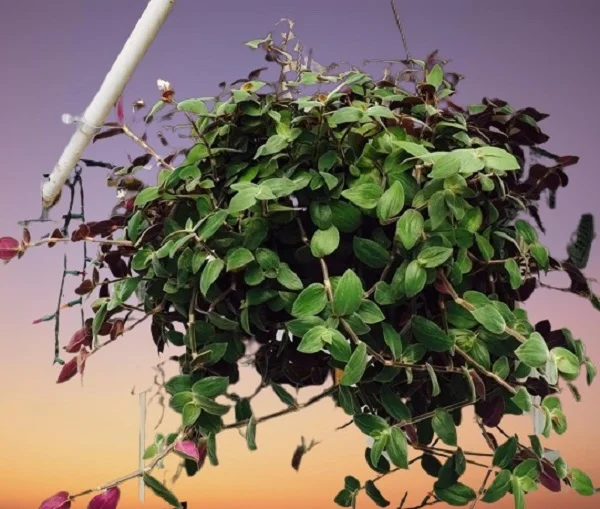
Baby Bunny Bellies Plant Problems
Baby Bunny Bellies Tradescantia (Tradescantia chrysophylla) growing problems are plant dying, leaf drop, leggy growth, loss of leaf color, pests and diseases among others. Keep reading for more on these problems, their remedies and solutions.
Diseases
Tradescantia Baby Bunny Belly is prone to leaf spot disease which is characterized by brown, moist spots on the foliage. In a serious attack the spots can enlarge and merge, killing the whole leaf. Isolate the affected plant to prevent spread to the other plants and treat it appropriately.
Pests
Common pests in Baby Bunny Bellies Plant are scales, mealy bugs and aphids. Isolate the affected plant and treat appropriately. Mist the leaves regularly to reduce infestation by these pests. Learn how to identify and get rid of pests in houseplants.
Plant dying
Baby Bunny Belly Plant is dying due to wrong growing conditions like too little light, poor quality soil, improper feeding, cold drafts, root-rot, pest infestations, incorrect watering among others.
Read more on these 10 Reasons Why Baby Bunny Belly Plant is Dying & How to Revive It
Leggy growth (elongated stems)
There are three possible causes of leggy growth in Baby Bunny Bellies Tradescantia. One possible cause of leggy growth is too little light. Position the plant in a brighter spot as it needs bright indirect light to thrive. You may also instal a grow light if you do not have adequate light in your home. Check out this post on understanding light for houseplants.
The second cause of leggy growth in Baby Bunny Bellies Plant is underwatering resulting in too little moisture in the soil and thus the plant does not get enough water and nutrients necessary for growth.
Maintain the soil moderately moist during the growing season. Reduce watering during the cold season but do not allow the soil to dry out completely. Read more on how to water houseplants the right way.
The third cause of leggy growth in Baby Bunny Belly Tradescantia is inadequate feeding (underfeeding). Feed the plant once a month in the growing season with a balanced, liquid fertilizer to promote healthy growth. Do not feed in the cold season to prevent fertilizer burn as growth is reduced at this time. Learn how to feed houseplants.
Dropping leaves
Tradescantia Baby Bunny Bellies will readily drop its leaves if the light is too little. Ensure to place your plant in bright indirect light place while protecting it from direct hot sunshine to avoid scorching of the leaves. If the natural lighting is not adequate, consider installing a grow light to supplement it.
Loss of leaf color
Loss of leaf color in Baby Bunny Bellies Plant is caused by too little light. Move the plant to a brighter spot as it grows best in bright indirect light away from direct sunshine (dappled light).
Yellow leaves and limp stems
Baby Bunny Belly Tradescantia may have yellow leaves and limp stems due to overwatering, underwatering, pests and diseases. Maintain the soil moderately moist at all times and never allow the soil to dry out completely. Regularly inspect the plant for pests and diseases infestation.
Final thoughts
If you’re looking for a low-maintenance, charming houseplant, Tradescantia ‘Baby Bunny Bellies’ is an excellent choice. This fast-growing, trailing plant thrives with minimal effort.
The key to a thriving Baby Bunny Belly Tradescantia is bright, indirect light, well-draining soil, and moderate humidity. Keep an eye on watering, and you’ll have a lush, happy plant in no time!
Frequently Asked Questions
1. How do you to care of a Baby Bunny Belly Plant?
- Position your Baby Bunny Belly Plant infront of a large, brightly-lit window where it will receive bright, indirect light away from direct sunshine.
- Give your Baby Bunny Belly Plant average warmth of 18-240C and keep it away from cold drafts.
- Grow the plant in fertile, moderately moist, well-drained soil and keep the soil slightly moist in the cold season but never allow the soil to dry out completely.
- Feed your Baby Bunny Belly Plant monthly with a balanced, water-soluble fertilizer during the growing season but do feed in the cold season.
- Maintain a moderate room humidity as the plant has no need for extra humidity.
- Repot your Baby Bunny Belly Plant during the growing season only when it is extremely pot-bound.
- Regularly remove dead foliage to maintain the plant neat and also minimize pest and disease infestations.
- Regularly pinch off the growing tips to encourage a bushy, compact growth.
- Cutback the leggy and strangly stems to rejuvenate growth and control growth of your Baby Bunny Belly Plant.
- Regularly inspect your plant for any pests and diseases and take timely control measures.
2. How to root Baby Bunny Bellies Plant?
Baby Bunny Bellies Plant stem cuttings can be rooted either in water or in soil. However, rooting in water takes longer than rooting in soil.
3. Why is my Baby Bunny Belly Plant dying?
Your Baby Bunny Belly Plant is dying due to cultural faults like incorrect watering, root-rot, pests infestations, cold drafts, too little light, poor feeding among other reasons.
4. Are Baby Bunny Bellies indoor or outdoor plants?
Baby Bunny Bellies Plant is a great choice for outdoors in the warm climates and USDA zones 10-12. In the colder regions it is best grown as an indoor plant or a container plant which can be brought inside when the temperatures dip to a minimum 130C.
5. Do Baby Bunny Bellies Plants like humidity?
Baby Bunny Bellies Tradescantia has no need for high humidity. Average room humidity of 50-55% is ideal for this Plant. However, where the temperatures are too high, set the pot on a wet pebble tray or use a cool mist humidifier to raise humidity.
6. Can Baby Bunny Bellies Plant be in the sun?
Baby Bunny Bellies Plant cannot tolerate direct sunlight on the leaves. Direct sunlight causes scorching resulting in ugly brown marks and may lead to reduced growth and death of the plant. It prefers bright, indirect light (filtered light).
7. How often do you water Baby Bunny Bellies Plant?
Baby Bunny Bellies Plant thrives in moderately moist soil during the growing season and slightly moist soil in the cold season. Therefore, thoroughly water the plant during the growing season until water drains through the drainage hole while allowing the top 2-3 inches of soil to dry out between waterings. Significantly reduce watering in the cold season but do not allow the soil to dry out completely to avoid leaf drop.
8. Are Baby Bunny Bellies Plants poisonous?
Baby Bunny Bellies Plants are mildly toxic to humans and pets. If ingested, the plant sap can cause burning in the mouth, tongue and throat. The sap may also cause skin irritation in sensitive skin.
9. How to repot Baby Bunny Bellies Plant?
- Repot Baby Bunny Bellies Plant only when it becomes pot-bound. Thoroughly water the plant and carefully slip it out of its pot.
- Remove most of the old soil from the roots, carefully detangle the roots and cut away old and dead roots with a sterilized pair of scissors.
- Select a terracotta pot one size larger than the current one and fill it half way with well-drained soil.
- Position the Baby Bunny Bellies Plant in the center of the pot and fill the pot and lightly press down the soil.
- Wet the soil thoroughly and replace the plant to its growing spot.
10. How do you prune Baby Bunny Bellies Plant?
- Regularly remove dead foliage to maintain the plant neat and also reduce pest and disease infestations.
- Regularly pinch off the growing tips to encourage a bushy, compact growth.
- Cutback the straggly stems to rejuvenate growth and control growth of your Baby Bunny Bellies Plant.
You liked it? Share on social media.
Related Content
Amazon Associates Disclosure
Homeplantsguide.com is a participant in the Amazon Services LLC Associates Program, an affiliate advertising program designed to provide a means for sites to earn advertising fees by advertising and linking to amazon.com.

